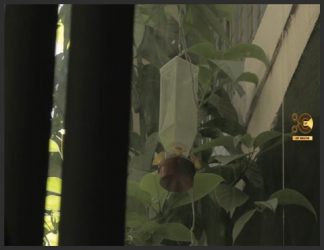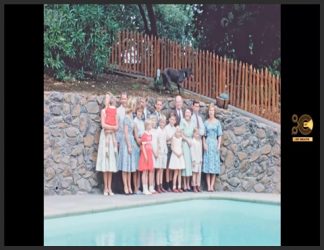You must need to login..!
توضیح
مستند کوتاه خارجی Inside The Secret World of Koi
برای دانلود رایگان مستند کوتاه خارجی Inside The Secret World of Koi با کیفیت 720p از پلیر سایت یا لینک زیر استفاده کنین:
ژانر:مستند
سال ساخت : 2018
مدت پخش : 54:04
زبان فیلم : انگلیسی
ساخت کشور ژاپن
کارگردان: Natsu Makati
بازیگران:
مستندی زیبا و علمی در باره ماهی koi ( کوی ) , نوع پرورش , تغذیه , معرفی انواع نژادهای برتر ماهی koi
و همچنین نوع گرید بندی و چگونگی اندازه گیری ماهی.آموزش قرنطینه و فروش ماهی koi ( کوی )
نوع تاکثیر و استخرهای تاکثیر ماهی koi ( کوی )
Nice and scientific documentary about koi fish, breeding type, nutrition, introduction of different koi fish breeds
As well as the type of grading and how to measure the fish. Quarantine training and sales of koi fish
Koi fish breeding and breeding ponds
Koi (鯉 ، انگلیسی: / ˈkɔɪ / ، ژاپنی: [koꜜi]) یا به طور خاص jinli یا nishikigoi (錦鯉 ، [ɲiɕi̥kiꜜɡoi] ، به معنای واقعی کلمه “کپور دستبند”) ، گونه های رنگی کپور آمور (Cyprinus rubrofuscus) هستند که نگهداری می شوند. برای اهداف تزئینی در استخرهای کوی در فضای باز یا باغ های آبی.
Koi نام گروهی غیررسمی از انواع رنگی C. rubrofuscus است. انواع مختلفی توسط ژاپنی ها به رسمیت شناخته شده است. انواع کوی با رنگ آمیزی ، الگوبرداری و مقیاس بندی مشخص می شوند. برخی از رنگهای اصلی سفید ، سیاه ، قرمز ، نارنجی ، زرد ، آبی و کرم هستند. محبوب ترین رده koi Gosanke است که از گونه های Kohaku ، Taisho Sanshoku و Showa Sanshoku تشکیل شده است.
کپور گروه بزرگی از ماهی است که در اصل در اروپای مرکزی و آسیا یافت می شود. گونه های مختلف کپور در اصل در شرق آسیا ، جایی که از آنها به عنوان ماهی غذایی استفاده می شد ، اهلی شدند. کپور ماهیان آب سرد است و توانایی آنها برای زنده ماندن و سازگاری با بسیاری از اقلیم ها و شرایط آب باعث شده تا گونه های اهلی در بسیاری از مناطق جدید از جمله ژاپن پخش شوند. جهش های رنگی طبیعی این کپور در همه جمعیت رخ داده است. کپور برای اولین بار بیش از هزار سال پیش در جهش های رنگی در چین پرورش داده شد ، جایی که پرورش انتخابی کپور پروس (Carassius gibelio) منجر به رشد ماهی های طلایی (Carassius auratus) شد.
ماهی کپور Amur (Cyprinus rubrofuscus) ، عضو مجموعه گونه های خانواده Cyprinid بومی شرق آسیا ، حداقل به مدت طولانی قبل از قرن پنجم قبل از میلاد در چین به عنوان یک ماهی غذایی در آبزیان پرورش داده شد و متن های جین Dynasty (قرن چهارم میلادی) ذکر شد. کپور با رنگهای مختلف. کپور آمور قبلاً به عنوان زیرگونه کپور معمولی شناخته شده بود (به عنوان C. c. hemematopterus) ، اما مقامات اخیر آن را به عنوان گونه جداگانه ای تحت عنوان C. rubrofuscus درمان می کنند. [4]
کپور آمور برای اولین بار در دهه 1820 در ژاپن و در شهر Ojiya در منطقه نیگاتا در سواحل شمال شرقی جزیره هونشو برای رنگ آمیزی پرورش داده شد. جهان خارج از پیشرفت تغییرات رنگ در koi ژاپنی تا سال 1914 ، زمانی که نیگاتا koi در یک نمایشگاه سالانه در توکیو به نمایش گذاشته بودند ، آگاهی نداشت. از آن زمان ، علاقه به koi در سراسر ژاپن گسترش یافت. از این تعداد انگشت شماری اصلی کوی ، به استثنای انواع اوگون (تک رنگ ، کوی فلزی) ، که به تازگی توسعه یافته است ، از کلیه گونه های دیگر Nishikigoi پرورش داده شد.
سرگرمی نگه داشتن کوی سرانجام در سراسر جهان گسترش یافت. آنها در بسیاری از فروشگاه های آکواریوم حیوانات اهلی فروخته می شوند و ماهی های با کیفیت بالاتر از فروشندگان ویژه در دسترس هستند. جمع آوری کوی به یک سرگرمی اجتماعی تبدیل شده است. سرگرمی های پرشور و پرشور به باشگاه ها می پیوندند ، دانش خود را به اشتراک می گذارند و با یکدیگر در مورد کوی خود کمک می کنند.
کلمات “koi” و “nishikigoi” به ترتیب از خواندن ژاپنی کلمات کلاسیک چینی به ترتیب car (کپور معمولی) و 錦鯉 (کپور گوشتی) است. در هر دو زبان ، اولی می تواند به بسیاری از گونه های کپور آسیا اشاره داشته باشد. در ژاپنی ، “koi” یک کلمه دیگر است که به معنای “محبت” یا “عشق” است ، بنابراین koi در ژاپن سمبل عشق و دوستی است.
Koi (鯉, English: /ˈkɔɪ/, Japanese: [koꜜi]) or more specifically jinli or nishikigoi (錦鯉, [ɲiɕi̥kiꜜɡoi], literally “brocaded carp”), are colored varieties of the Amur carp (Cyprinus rubrofuscus) that are kept for decorative purposes in outdoor koi ponds or water gardens.
Koi is an informal group name of the colored variants of C. rubrofuscus. Several varieties are recognized by the Japanese. Koi varieties are distinguished by coloration, patterning, and scalation. Some of the major colors are white, black, red, orange, yellow, blue, and cream. The most popular category of koi is the Gosanke, which is made up of the Kohaku, Taisho Sanshoku, and Showa Sanshoku varieties.
Carp are a large group of fish originally found in Central Europe and Asia. Various carp species were originally domesticated in East Asia, where they were used as food fish. Carp are coldwater fish, and their ability to survive and adapt to many climates and water conditions allowed the domesticated species to be propagated to many new locations, including Japan. Natural color mutations of these carp would have occurred across all populations. Carp were first bred for color mutations in China more than a thousand years ago, where selective breeding of the Prussian carp (Carassius gibelio) led to the development of the goldfish (Carassius auratus).
The Amur carp (Cyprinus rubrofuscus), a member of the cyprinid family species complex native to East Asia, was aquacultured as a food fish at least as long ago as the fifth century BC in China, and Jin Dynasty (fourth century AD) texts mentioned carp with various colors.The Amur carp was previously recognized as a subspecies of the common carp (as C. c. haematopterus), but recent authorities treat it as a separate species under the name C. rubrofuscus.
Amur carp were first bred for color in Japan in the 1820s, in the town of Ojiya in the Niigata Prefecture on the northeastern coast of Honshu Island. The outside world was unaware of the development of color variations in Japanese koi until 1914, when the Niigata koi were exhibited at an annual exposition in Tokyo. From that time, interest in koi spread throughout Japan. From this original handful of koi, all other Nishikigoi varieties were bred, with the exception of the Ogon variety (single-colored, metallic koi), which was developed relatively recently.
The hobby of keeping koi eventually spread worldwide. They are sold in many pet aquarium shops, with higher-quality fish available from specialist dealers.[5][6] Collecting koi has become a social hobby. Passionate hobbyists join clubs, share their knowledge and help each other with their koi.















